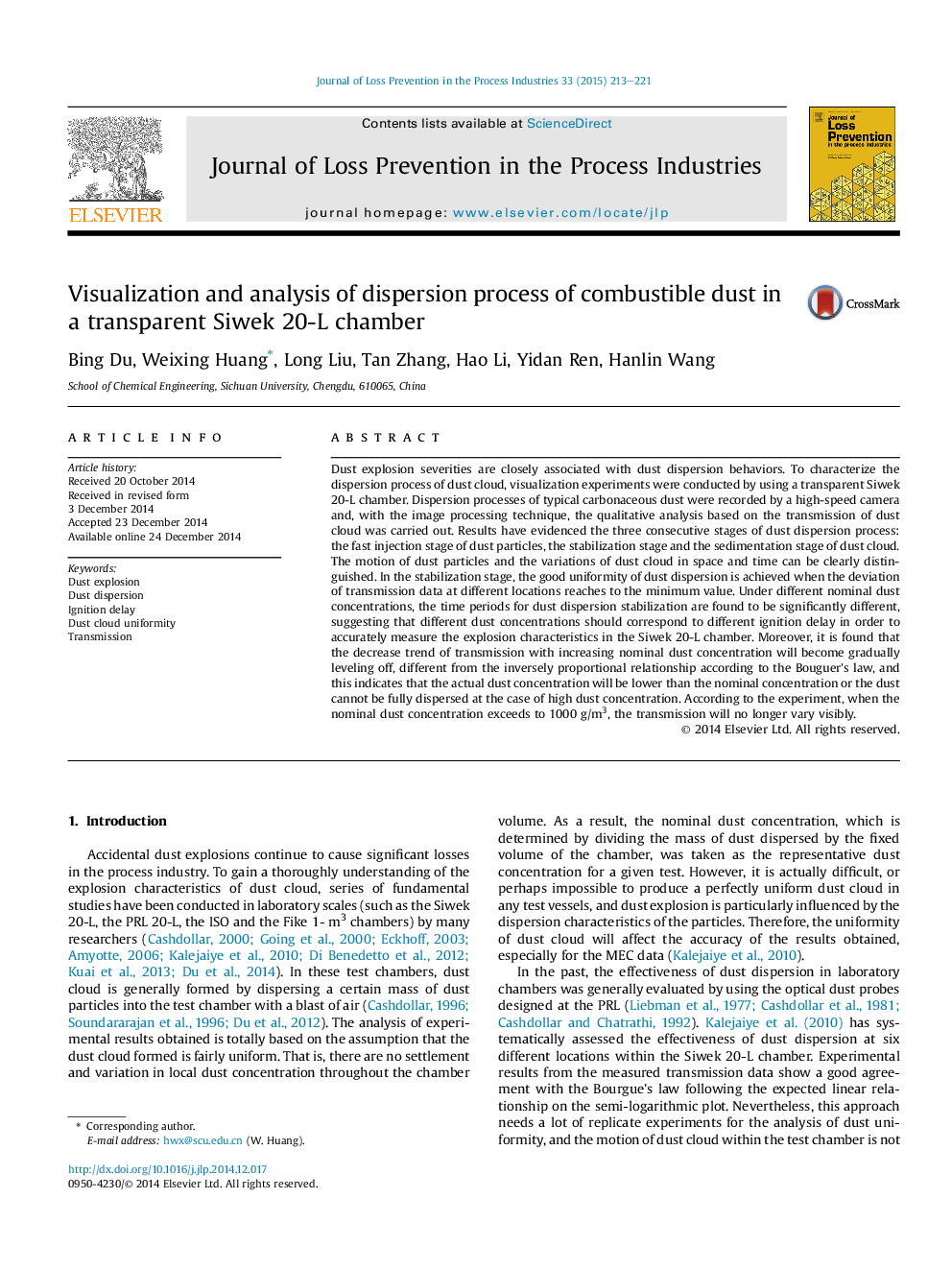| Article ID | Journal | Published Year | Pages | File Type |
|---|---|---|---|---|
| 586179 | Journal of Loss Prevention in the Process Industries | 2015 | 9 Pages |
•The visualization results of dust dispersion process in Siwek 20-L chamber are obtained.•Dust cloud uniformity in space and time is qualitatively analyzed with the image processing technique.•Dispersion behaviors varying with increased nominal dust concentration are systematically investigated.•The significant deviation between nominal and actual dust concentration is identified.•The maximum concentration of dust dispersion in Siwek 20-L chamber can be determined.
Dust explosion severities are closely associated with dust dispersion behaviors. To characterize the dispersion process of dust cloud, visualization experiments were conducted by using a transparent Siwek 20-L chamber. Dispersion processes of typical carbonaceous dust were recorded by a high-speed camera and, with the image processing technique, the qualitative analysis based on the transmission of dust cloud was carried out. Results have evidenced the three consecutive stages of dust dispersion process: the fast injection stage of dust particles, the stabilization stage and the sedimentation stage of dust cloud. The motion of dust particles and the variations of dust cloud in space and time can be clearly distinguished. In the stabilization stage, the good uniformity of dust dispersion is achieved when the deviation of transmission data at different locations reaches to the minimum value. Under different nominal dust concentrations, the time periods for dust dispersion stabilization are found to be significantly different, suggesting that different dust concentrations should correspond to different ignition delay in order to accurately measure the explosion characteristics in the Siwek 20-L chamber. Moreover, it is found that the decrease trend of transmission with increasing nominal dust concentration will become gradually leveling off, different from the inversely proportional relationship according to the Bouguer's law, and this indicates that the actual dust concentration will be lower than the nominal concentration or the dust cannot be fully dispersed at the case of high dust concentration. According to the experiment, when the nominal dust concentration exceeds to 1000 g/m3, the transmission will no longer vary visibly.
